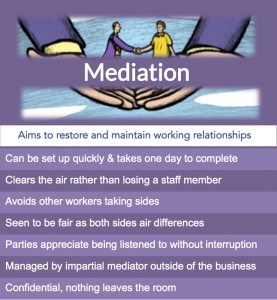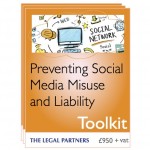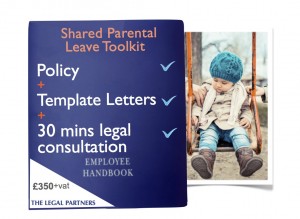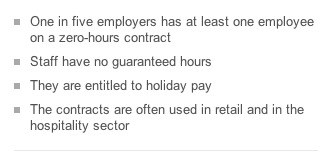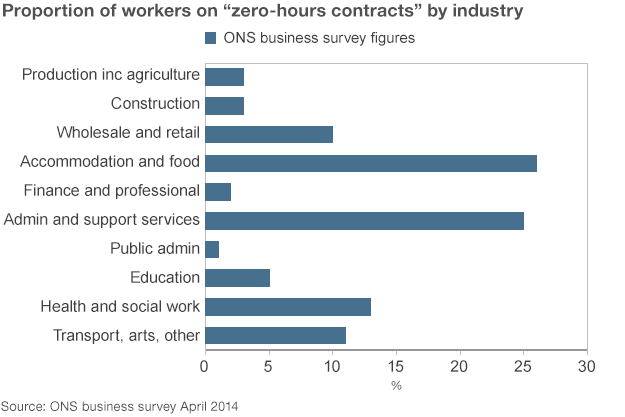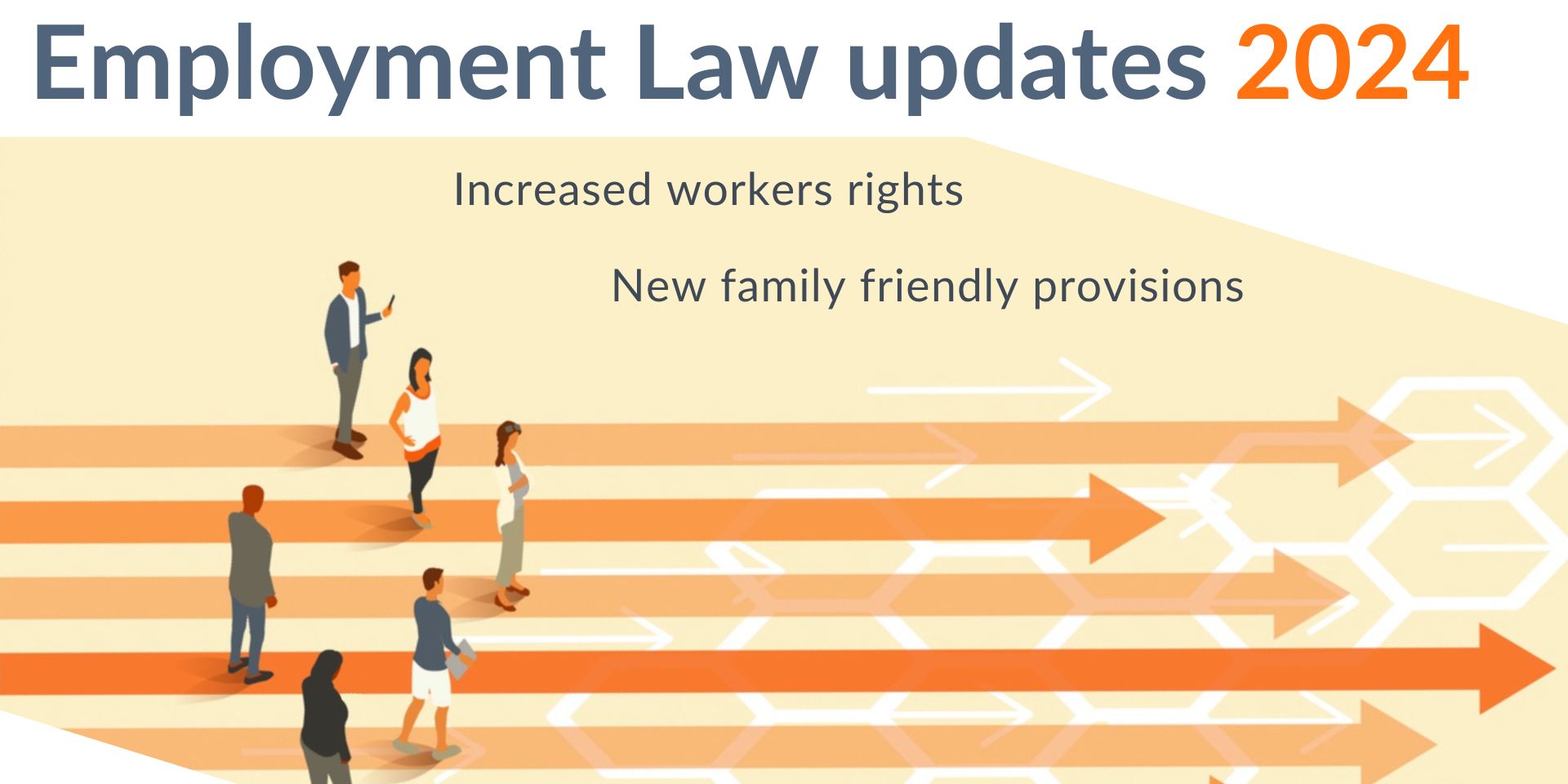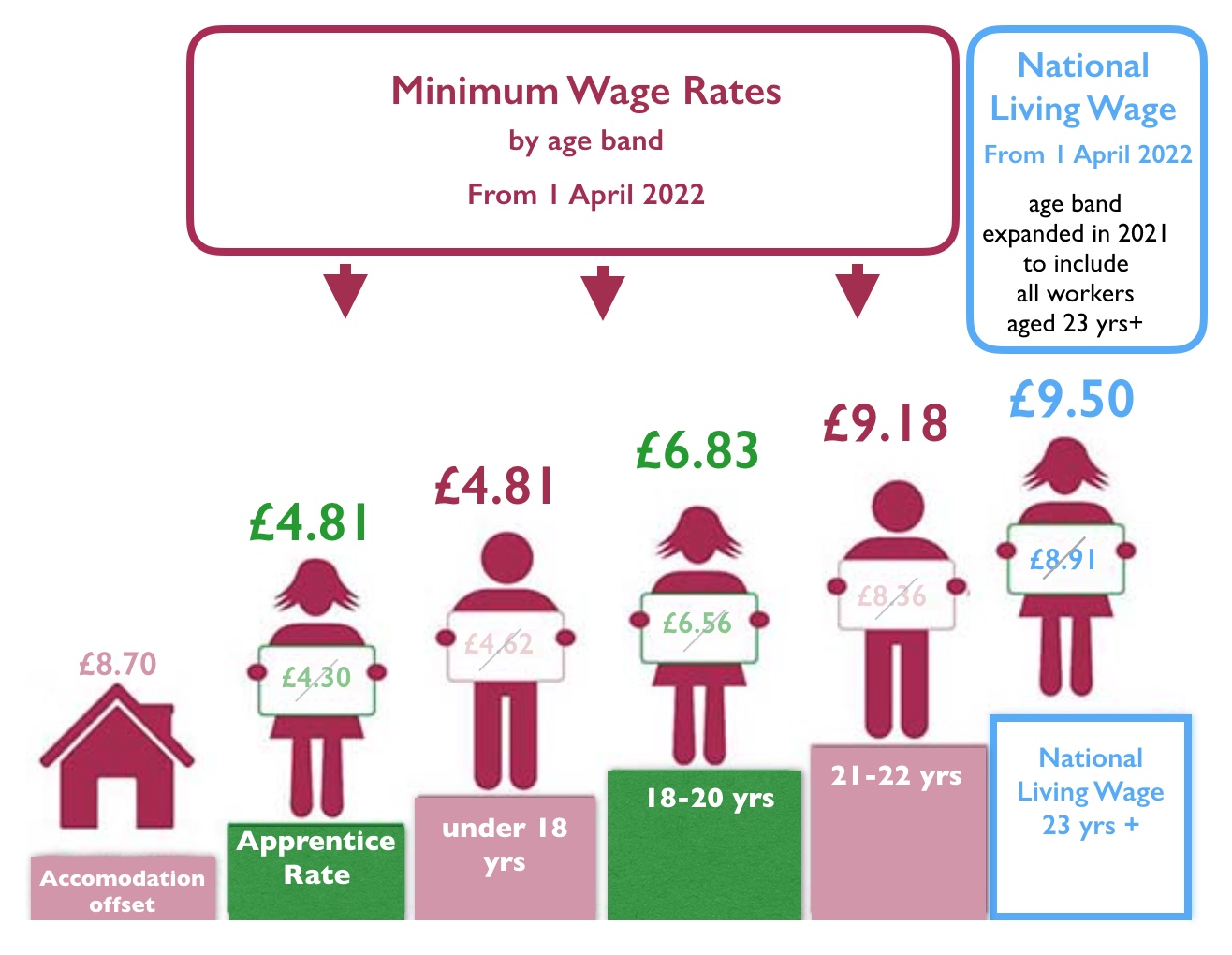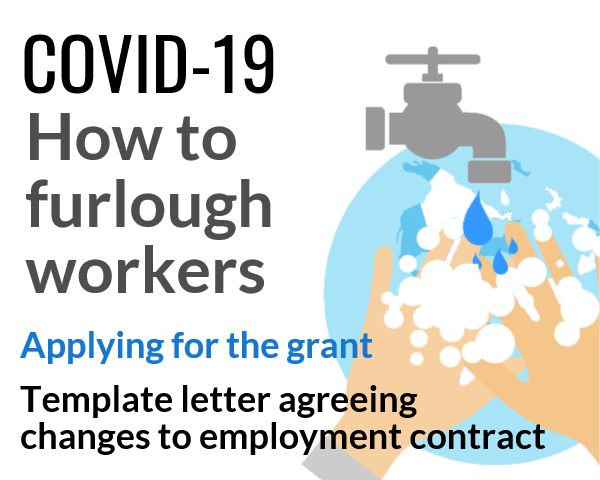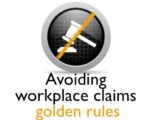
Employers’ guide to the ‘Day 1’ right to request flexible working
Estimated reading time: 10 minutes From 6th April 2024, all employees have the right to request flexible working from Day 1 in their role, removing the previous 26 week wait. The Flexible Working (Amendment) Regulations 2023 represent a major shift in the approach to flexible working in the UK, reflecting changing attitudes towards balancing the demands of work with personal life and caring responsibilities.Alongside this, there are changes to the procedure for requesting flexible working, which were also brought into force on 6th April. The new right and procedure is supported by an updated Statutory Acas Code of Practice on requests for flexible working which also came into force on 6th April 2024.Failing to adhere to this new procedure can...>>
New employer duty to prevent sexual harassment: prepare & protect your employees & your business
Estimated reading time: 5 minutes From 26 October 2024, there is a new employer duty to prevent sexual harassment. Employers will be under a mandatory duty to take reasonable steps to prevent the sexual harassment of their staff at work. In the wake of the #MeToo movement, the Government committed to shoring up protections for employees by imposing a positive duty on employers to prevent sexual harassment at work. As of 26 October 2024, this duty is contained in the Worker Protection (Amendment of Equality Act 2010) Act 2023 (The Act). The Act introduces a new duty for employers to take reasonable steps to prevent sexual harassment of employees. It can increase the potential compensation for victims by a further...>>
A guide to rolled up holiday pay in 2024
Estimated reading time: 5 minutes The Government has issued new guidance allowing the return of the 12.07% “rolled up” method for calculating holiday pay for irregular hours and part year workers. Following the introduction of the nattily titled Employment Rights (Amendment, Revocation and Transitional Provision) Regulations 2023 in January this year, employers can use rolled-up holiday pay as an additional method for calculating holiday pay for leave years beginning on or after 1 April 2024. The new regulations define irregular hours workers and part year workers like this: An irregular hours worker - typically found in the hospitality industry- is classed as such if the number of paid hours they work is wholly or mostly variable. They include zero hours contract workers, freelancers and gig...>>
The new laws supporting working parents in 2024- an employer’s guide
Estimated reading time: 13 minutes Last year the Government introduced a number of family-friendly new laws and provisions aimed at increasing support for working families. This resulted in the following family-friendly laws coming into force from 6th April 2024.This guide summarises all these new laws, what you need to know, what they offer working parents, and the implications for businesses and employers. Use it to update your staff and to get contracts, policies and practices ready. New Family-friendly laws from 6th April 2024: Enhanced protection from redundancy for pregnant women and new parents Increased flexibility in paternity leave New right to carers leave which increases the very short term carers leave (i.e emergency unpaid time off for dependents) Introducing paid...>>
3 month cap on non-compete clauses, implications for employers
As part of its policy paper "smarter regulation to grow the economy" in May 2023, the Government announced plans to limit the length of non-compete clauses in employment contracts to three months. This 3 month cap on non-compete clauses represents a major shift that could see employers making greater use of garden leave clauses and imposing longer notice periods to protect the business’ interests.This article explains the proposed changes and looks at the potential implications for employers. What is a non-compete clause? A non-compete clause is one type of post termination restriction (PTR) , also known as “restrictive covenants” which can be used by employers to restrict employees in their activities after their employment has ended. Broadly, non-compete clauses prevent...>>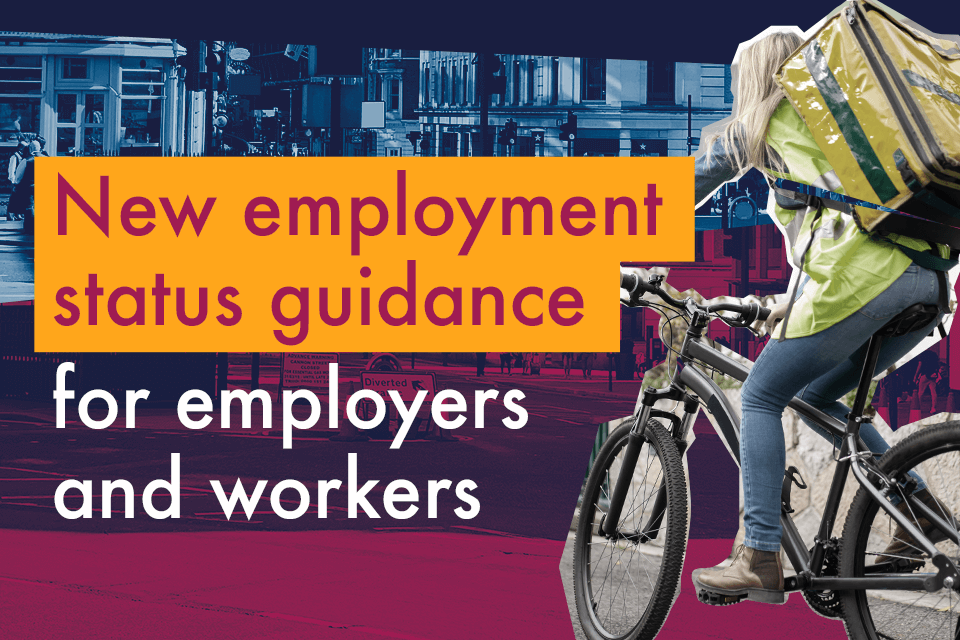
Government publishes new suite of guidance clarifying employment status
Estimated reading time: 3 minutes Back in July 2022, the Government published a new suite of online guidance to clarify employment status. The guidance provides a ‘one-stop shop for businesses and individuals to understand which employment rights apply to them’.The latest guidance is in response to the 2018 employment status consultation which was part of The Good Work plan, a policy paper published by the Government in response to the Taylor Review of modern working practices. In its Good Work plan, the Government had originally committed to legislate to improve the clarity of tests for employment status. The Government decided to press pause on this and instead issue the clarifying guidance, reasoning that ‘the benefits of legislating on employment status are...>>
Transfer of Undertakings (TUPE) process, explained
It's common for all or parts of a business to change hands and be transferred from one owner to another. But what happens to the employees working for that business? In this article we explain the Transfer of Undertakings (TUPE) process, its purpose, when it applies, and 5 key things to include in a TUPE Process. The purpose of the TUPE - Transfer of Undertakings (Protection of Employment) Regulations - which came into force in 1981 and were updated in 2006, is to protect employees who are transferring over to a different business when all or part of the business is sold and when activities are “outsourced” or when service providers change. So when a business or part of a business...>>
How and when to use Settlement Agreements, a checklist for employers
This checklist sets out the key issues employers should consider before entering into a settlement agreement with an employee, and how and when to use settlement agreements. Settlement Agreements used to be called Compromise Agreements. The Government renamed them in back in July 2013 in order to promote a practice of resolving issues within organisations rather than at Employment Tribunals. To the same end, also in 2013 the Government introduced Pre-Termination Negotiations, or "protected conversations" as they are also known. These are designed to give employers a safe route to broach the offer of a Settlement Agreement for an employee to leave without this leading to an unfair dismissal claim, by - importantly - following the ACAS Code of Practice on Settlement...>>
Buying a business: avoid the legal pitfalls
Businesses are facing disruption from all angles. Brexit and of course the Covid-19 pandemic are the latest additions to a complex landscape facing companies. This brings opportunities of course as well as risks and we are seeing renewed interest and activity in business acquisitions as the country moves beyond Covid-19. We highlight some of the pitfalls of buying a business, and how to avoid these. What is the right structure for the acquisition? A buyer can buy either the shares of the company that owns the target business or simply buy the assets which make up that business: What is a share purchase? The buyer buys the whole company (including liabilities that it may not know about). What is an...>>
Bribery Act: how to avoid criminal liability
This guide explains the offences introduced by the Bribery Act 2010, the penalties, and highlights practical steps that business can take to keep within the law. What is bribery?Transparency International (a non-governmental anti-corruption organisation) defines bribery as “the offering, promising, giving, accepting or soliciting of an advantage as an inducement for an action which is illegal or a breach of trust.” Why was the Bribery Act 2010 introduced? The Bribery Act 2010 was introduced to strengthen the existing bribery and corruption laws in the UK. The Organisation of Economic Co-operation and Development (OECD) had repeatedly criticised the UK system for being weak and ineffective compared with the more robust regimes in other countries, such as the US Foreign and Corrupt Practices Act. What are the offences under...>>
How to use Incoterms to de-risk your exports
International Commercial Terms (Incoterms) are internationally recognised standard trade terms used in export contracts or international sales contracts. They are used to make sure the buyer and seller know: who is responsible for the cost of transporting the goods, including insurance, taxes and duties. where the goods should be picked up from and transported to. who is responsible for the goods at each step during transportation The current set of Incoterms is Incoterms 2010. A copy of the full terms is available from the International Chamber of Commerce What do the Incoterms mean? Incoterms are used in contracts in a 3-letter format followed by the place specified in the contract (eg the port or where the goods are to be picked...>>
Workplace pensions: 2019 contributions & ongoing duties
All deadlines and staging dates for auto enrolment have now passed. This means that under the Pensions Act 2008, every employer in the UK must put their qualifying employees in a workplace pension scheme (called auto enrolment) and, where appropriate, pay contributions. If you employ just one person, you are classified as an employer and have certain legal duties. This article from the pensions regulator web site explains more about ongoing pensions duties for employers.If you are employing staff for the first time (or haven't caught up with auto enrolment) act now and click on this link to the pensions regulator web site, to find out what to do and by when. Auto enrolment, Employer contributions increasing in 2019. The minimum amounts that employers and their...>>
Workplace Mediation, resolving conflict at work
Workplace Mediation has long been gathering momentum, becoming increasingly popular amongst UK companies who now use it as an effective way to resolve disputes at work. Mediation can provide solutions which meet the needs of all parties; its cost effective, fast (90% are resolved within one day), avoids disruption, removes the debilitating effects of unresolved conflict and can pave the way for restored workplace relationships. The Centre for Effective Dispute Resolution (CEDR) published their latest Mediation Audit in May 2021. This 2 yearly survey of UK commercial lawyers and mediators, assesses the case numbers, take up of mediation and attitudes towards it. Up until September 2020, the number of mediations carried out in England and wales increased by 38% (to 16,500 mediations in the 2020 report,...>>
Consumer Rights Act Toolkit for Business
The Consumer Rights Act (CRA) 2015 fundamentally increased all obligations and liabilities a business has towards its consumer customers. Most notably the CRA 2015 gave consumers the right to a 30 day refund on purchases. The new laws came into force on 1 October 2015. If your business deals with consumers or sells goods, services or digital content online, and if you haven't already done so, its absolutely time to review and update your customer contracts, Terms and Conditions etc, to comply with these new laws.This article explains what every business needs to know about the Consumer Rights Act 2015 and how to comply. To shortcut the whole process, we have also created a Consumer Rights Act Toolkit for Business, so you can easily comply with these new laws,...>>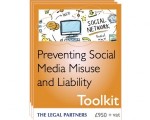
Avoid Social Media liability-Social Media Toolkit
Our Social Media Legal Toolkit is a simple way to ensure you avoid social media liability and keep your business out of trouble,to preventing any litigation from social media misuse by employees. It includes:Social Media Policy+IT & Systems usage Policy +1 hour of our advice or training with your staff to clearly spell out what they must, must not do, something Apple Retail UK and Wetherspoons undertook wisely to their huge advantage when it came to the crunch. For what happened and to find out practical steps you can take to avoid Social Media liability, read our article: For a fixed price of £950 + plus VAT you are ready to protect your business immediately.To purchase your toolkit, email or call us directly, our details are below.>>
How to avoid Social Media misuse and protect from liability
Exposure through Social Media is rapidly becoming part and parcel of an organisation’s day to day operation. Even if your business isn't actively on Social Media platforms such as Twitter, Facebook or messaging Apps such as WeChat or WhatsApp, your employees most likely will be.Most employers get into trouble over, or on social media because they haven’t put policies in place and they haven't set expectations with staff of what is good and bad behavior online.Below we've put together a 5 point summary of the risks involved and the steps you need to take to avoid Social Media misuse and protect your business from liability.It provides an overview of the law in this area. Please talk to us for a complete understanding of how it may...>>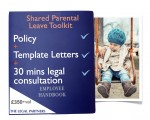
New Shared Parental Leave Toolkit for Employers and HR Directors
With new shared parental leave laws in place, it’s a good time to think about how to handle multiple requests for shared parental leave from male and female members of your workforce. Employees can make request for shared parental leave from February 2015 for all birth due dates/matching dates (for adoption) from April 2105 onwards.Watch this slideshare for the changes to maternity and paternity leave entitlements and a quick, visual overview of the key points to remember. Shared parental leave 2015 guidance for parents and employers from The Legal Partners If you haven't already done so, now is the time to create a Shared Parental Leave policy to include in your Employee Staff Handbook. With this in mind we have developed a Shared Parental Leave...>>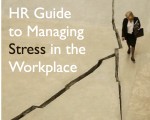
HRs’ Guide to Managing Stress at Work
This is a detailed guide to managing employee stress at work for HR professionals, Employers and Line Managers.It covers the law relating to stress that you need to know and practical tips on how you and your company can manage employee stress, minimizing it's effect on the business, being protected from claims, and ensuring you take the appropriate steps to help your employee. What is stress? The Health & Safety Executive (HSE) defines stress as the "adverse reaction people have to excessive pressures or other types of demand placed on them". There is sometimes confusion between pressure and stress. It is healthy for staff to have challenges to meet; too much pressure however, can be harmful to health. In addition,...>>
Zero-hours contracts, get help for your business with a fixed price review
Zero-hours contracts, get a fixed price review from The Legal Partners We have created a Fixed Price Review of your zero-hours contracts to help businesses be prepared for these changes, minimise the administrative workload that comes with them and avoid the PR, discrimination and legal risks that threaten to arise.Our £950+vat fixed price review will assess the current zero-hours contracts your business uses and ensure you and your teams are prepared and covered for the news laws, in whatever form they take, when they arrive . What are zero-hours contracts? Courtesy of BBC article news/business-27219654 A zero-hours contract is one used for casual working. The employer does not guarantee to provide the casual worker with any work and pays the worker...>>
Avoid Bribery charges & fines with our Anti-Bribery and Corruption Toolkit.
The UK Bribery Act 2010 made Company Directors legally responsible for bribery in their organisations, and personally liable for not preventing it.In recent years global organisations such as Avon, Glaxo China, BAE Systems and Rolls Royce have fallen foul of the Serious Fraud Office investigations and paid millions in fines on Bribery and Corruption charges. In 2016, for the first time a UK company Smith and Ouzman and it’s Directors were handed a £2.2m fine and 4 1/2 yrs (suspended) after being found guilty of bribing foreign agents, following a 4-year investigation by the SFO. The length of this investigation and the sentencing of a "typical UK SME" rather than a global corporation sends a strong message to UK companies of every size.Being smaller and less...>>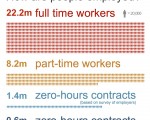
Zero-Hours contracts, guide for employers
Zero-hours contracts – latest guide for employers What are zero-hours contracts? A zero-hours contract is one used for casual working, under which the employer does not guarantee to provide the worker with any work and pays the worker only for work actually carried out. The worker is expected to be available for work when or if called on by the employer.Zero hours contracts are not illegal. If they are freely entered into, a zero-hours contract is a legitimate form of contract between individual and employer. Zero-hours contracts can be used by employers to provide a flexible workforce to meet a temporary or changeable need for Staff. Examples include a need for workers to cover:- unexpected or last-minute events (e.g a restaurant needs...>>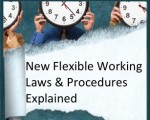
New flexible working laws & procedures 2014 explained
A 60 second summary of the new flexible working laws, in pictures. Employers and HR Directors can be resourced with the essential knowledge you need to know when planning Flexible Working Policies and responding to Flexible Working requests. View the slideshare below New flexible working laws made easy - a guide for Employers, HR Directors from legalpartners>>
Appointing a Non–Exec Director? Terms to agree
Why appoint a Non-Exec Director? Bringing a Non-Executive Director or Chairman into a company can be a very smart move for CEOs, CFOs and for the Board, particularly at times of significant change or upheaval in the business. The objectivity and wise experience of the right Non-Exec will be a great asset for businesses of all sizes, and I mean from start-ups upwards.A Non-Exec Director’s experience in the following areas can be invaluable: industry contacts and knowledge strategic vision built on his/her past success as a Board Director, for example – assessing new markets or a company acquisition or fund-raising. The recession that followed the financial crisis in 2008/ 2009 has given Directors a lot of invaluable knowledge and experience for dealing...>>
Early Conciliation: new rules in employment disputes
From 6 April 2014 onwards, a new system of Early Conciliation (EC) requires employees to take some compulsory steps before they can make a claim against an employer. It is mandatory in almost every case (there are a few very limited exceptions).The Early Conciliation system requires employees who believe they have an Employment Tribunal (ET) case to inform Acas before their case can proceed through an ET.The new system should not deter employers from attempting to resolve issues informally or through mediation. The Early Conciliation system requires employees who believe they have an Employment Tribunal (ET) case to inform Acas before their case can proceed through an ET. Early Conciliation, the new procedure in employment disputes. This is how it works. An employee will be...>>
Avoiding employer liability: social media & email
Are you concerned about your liability as an employer when your team use social media and email at work? This guide highlights the risks of employer liability when your employees are using social media or sending e-mails and gives some practical suggestions of how to minimise those risks. The huge growth in popularity of social media in recent years has created challenges as well as opportunities for every business. Blogs and similar media present a unique opportunity to get a positive image of a business into the public domain as well as providing an efficient way of sharing information, knowledge and best practice with others. The other side of the coin is that legal liabilities can arise from the use of...>>
Hiring new employees
Hiring new employees: the legal issues you need to know This checklist highlights the key legal issues involved in hiring new employees, the legal issues you need to know and what you need to do. Hiring new employees: before advertising Make sure all staff involved in hiring new employees have had equal opportunities training (and they continue to receive it while working for your business).Draw-up the following documents: job description which sets out the title and main purpose of the job, the place of the job holder within your business and the main tasks or responsibilities of the post. a person specification which details the experience, know-how and qualifications, skills and abilities necessary for the job in question. The requirements can be split between...>>
Importing from China, legal advice for UK companies
If your business is already importing from China, or considering Chinese imports, you will want to ensure the process, and the relationship with your Chinese suppliers, goes smoothly right from the beginning.Stories of lost sales and key promotions unfulfilled due to a slip up at the Chinese factory are common and can make companies cautious of taking the first step.Here are some key tips and useful practices to adopt with your Chinese suppliers, to ensure that your goods arrive as expected, on time, and in the right quantity, consistently. We’ve included some front line advice on what to do if problems do arise. First things first, do your research. Check the validity of your potential supplier's chinese factory & company. Speak to...>>
Redundancy – why must a business offer alternative employment?
Businesses that make redundancies have a duty to look for alternative employment for any potentially redundant employees. A dismissal is likely to be unfair if, at the time of the dismissal, the business did not consider whether any suitable alternative employment existed within its business. This business briefing sets out the key issues a business needs to consider. Extent and duration of the search A business is not obliged to create alternative employment for redundant employees where none already exists. However, the business should make a thorough search for alternative employment and document that search. This will enable the business to show the steps it has taken if it has to produce evidence in defence of an unfair dismissal claim....>>
Redundancy Checklist
This redundancy checklist summarises the key issues that a business should be aware of when dealing with a redundancy situation.When can a redundancy situation arise?Redundancy encompasses three different types of situation: Business closure. Workplace closure. Reduction of workforce. Collective consultation If a business is making 20 or more employees redundant over a period of 90 days or less, the business must: inform and consult appropriate employee representatives. notify the Department for Business, Innovation and Skills (BIS). An employment tribunal can award up to 90 days’ pay for each employee if the business has not consulted adequately. The business can also be fined for failing to notify BIS. The business should also ensure that it follows a fair procedure during the...>>
TUPE Checklist
Use this TUPE checklist to help make the Transfer as efficient and liability free as possible. When does TUPE apply? TUPE applies to a “relevant transfer”. A relevant transfer can be where: A business or part of a business is sold. Work is outsourced from a client to a contractor. Outsourced services are transferred from the original contractor to another contractor or back to the client (ie in-sourced). A client brings the outsourced services back in-house. Further analysis and advice is always needed to confirm whether TUPE applies or not.Whether TUPE does or does not apply will have significant financial implications on any proposed transaction. Which rights are automatically transferred under TUPE? Employees transfer to the new employer on their...>>



